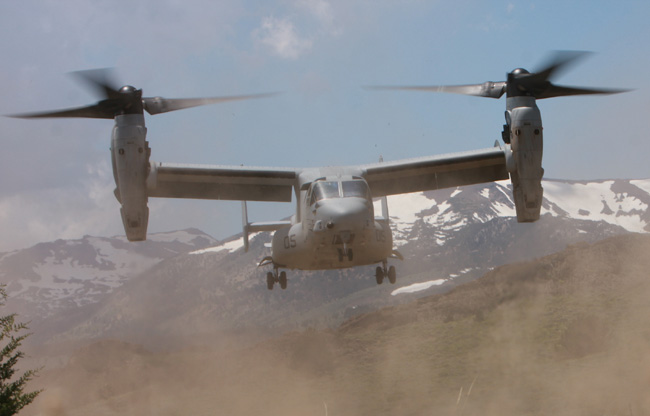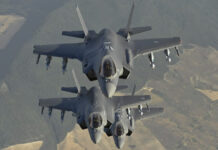
The US is preparing a multi-billion arms deal that will include the sales of advanced fighter planes, air-to-ground strike weapons and special mission aircraft to Israel, Saudi Arabia and the UAE. The total value of these packages is expected to exceed $10 billion.
As part of these sales the United States has agreed to deploy standoff precision attack weapons to Saudi Arabia and the UAE. Although the exact type of anti-radiation or standoff weapon has not been detailed by the Pentagon, it is believed that those weapons are the AGM-154C Joint Stand-Off Weapon (JSOW-C) built by Raytheon,
to be carried by Boeing F-15SA and Lockheed Martin F-16 Block 60s, and Advanced Anti Radiation Guided Missile (AARGM – AGM-88E) destined for the Israeli F-16s and F-15s.
The sale of advanced strike weapons has always been a sour issue for US exports, as such plans traditionally encountered opposition in Congress. Last month the US lost an opportunity in South Korea, after Seoul opted to buy a German weapon after failing to get approval for buying the US JASSM. Sales of strike weapons to Middle Eastern air forces met similar opposition, strengthened by Israeli supporters on the Hill.
This time the arms packages are bundled in a way that could defuse potential opposition often raised by plans to transfer offensive weapons to Middle Eastern countries. “A key part of the agreement is that we believe, and the Israelis believe, that [providing] these capabilities in no way diminishes Israel’s qualitative military edge, but are consistent with [the need to] commonly address threats in the region.” Pentagon official said. The United States will jointly train with the Emirati and Saudi pilots, as has been the case for other sales of military aircraft, he noted, adding that “There will be enhanced end-use monitoring consistent with what we provide with sensitive technology to our other allies and partners around the region… and there will be consultations prior to any of the weapons’ deployment.”
Defense Secretary Chuck Hagel is expected to discuss and finalize the agreements on these arms sales this week, during his visits in Israel, Jordan, and Saudi Arabia. According to senior Pentagon sources, the secretary’s a six-day trip will includes meetings with counterparts and officials in Israel, Jordan, Saudi Arabia, Egypt and the United Arab Emirates. Sources said Hagel plans to discuss the ‘historic arms deal’ that involves Israel, Saudi Arabia and the UAE, along with the situations in Syria, Iran, and the Sinai Peninsula.
[nonmember]To continue reading the full version of this article
please subscribe to Defense-Update Premium plan[/nonmember]

[ismember]

Pentagon sources said these arms deals follow a series of sensitive bilateral negotiations that took place over the past year and resulted in agreements, reached also through consultations with Congress, to approve requests by Israel for advanced radar for Israeli jet fighters, anti-radiation missiles, KC-135 refueling tankers and Bell-Boeing V-22 Ospreys special mission planes.
In 2010 Saudi Arabia agreed to purchase 84 F-15SA tactical fighters in a deal worth $29.4 billion, the official said, and the first F-15s have rolled off the line in St. Louis and are undergoing flight testing at Wright-Patterson Air Force Base, Ohio. During Hagel’s trip, the UAE is expected to move forward with the purchase of 25 F-16 Block 60 Desert Falcon fighters manufactured by Lockheed Martin in Fort Worth, Texas. The expected value of the sale is $4.25 billion, the official said.
The US move could be an attempt to ‘buy time’, until a future UAE decision about a possible buy of the F-35, as an increase of the numbers of UAE F-16 squadron could mean lower operating costs and reduce numbers of Rafales or Typhoons.
The UAE already operates 78 Desert Falcon fighters, along with 68 Dassault Mirage 2000-9s delivered from France in the 1990s. The UAE has been considering to replace those Mirages with the French Rafale or Eurofighter Typhoon, negotiations with France have been stalled last year and talks with Eurofighter began in December 2012. The US move could be an attempt to ‘buy time’, until a future UAE decision about a possible buy of the F-35, as an increase of the numbers of UAE F-16 squadron could mean lower operating costs and reduce numbers of Rafales or Typhoons.
The release of U.S. military capabilities is the culmination of an effort that President Barack Obama asked former Defense Secretary Leon E. Panetta to undertake late last year, another senior defense official said. Given many shared threats in the region, including Iran, Syria, terrorism, border issues and other challenges, the president wanted Panetta “to look at ways not just to protect Israel’s qualitative military edge, which is a key principle of American policy, but to increase the capabilities of Israel in a significant and meaningful way and in doing so increase the capabilities of key partner nations,” he added.
The release of other capabilities to Israel should also be seen in perspective. The US did not export any anti-radiation missile in the past, but in recent years, the development of an enhanced version of the High speed Anti-Radiation Missile (HARM) designated AGM-88E built by ATK, currently entering service, was done with Italian participation. The Ospreys have not been exported as well, although marketing of the aircraft are currently ongoing. As for the radars, the UAE has already received a high performance radar for their F-16 Block 60 and the new and modernized F-15SA destined for Saudi-Arabia will receive advanced AESA radars. The approval for the sale of an AESA radar for the Israeli fighter will also end the hopes of a possible use of domestically developed AESA radar for the Israeli F16s, which could have helped IAI’s export campaign for this radar.

The case for providing the IAF with flying tankers delivered from USAF surplus can also be viewed as a commercial interest for the US – a move that could limit Israel’s ambitions to exploit growing demand for tankers in the global market. Israel already operates several Boeing 707 flying tankers converted from commercial jets into flying tankers and the introduction of ex-USAF KC-135 aircraft, as military variants of these platforms, would provide an aircraft that has already been re-engined and refurbished for military use. The type flown by the USAF is re-engined with four CFM-56-2 high bypass engines engines. These modern engines enable the KC-135 access to airfields where the current 707s cannot land, due to excessive pollution levels of their old engines.
In the past the US restricted the export of aerial tankers to NATO members, but in recent years relaxed these restrictions, following the introduction of competing platforms from Russian, European and Israeli origin. The KC-135 is currently operational with France, Chile, Turkey, Singapore. Slightly different variants are also operated by the Air Forces of Brazil, Saudi Arabia and Iran. Few weeks ago Israel Aerospace Industries bagged a Brazilian contract for the supply of Boeing 767 tankers to the Brazilian AIr Force, beating US and European competition.
[/ismember]




















